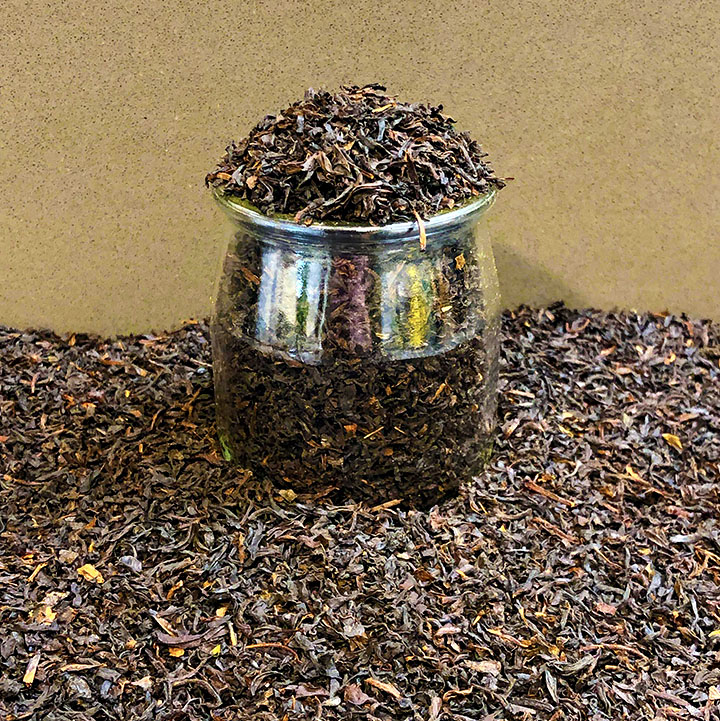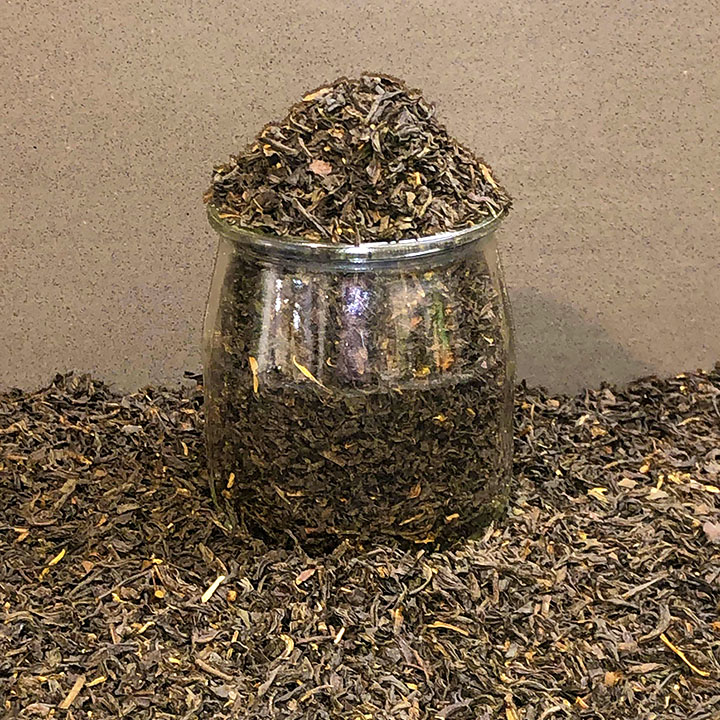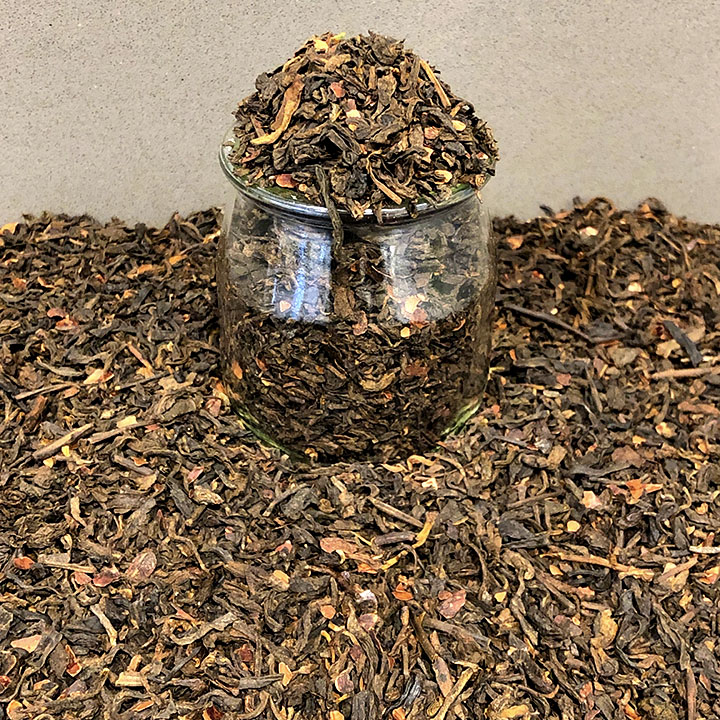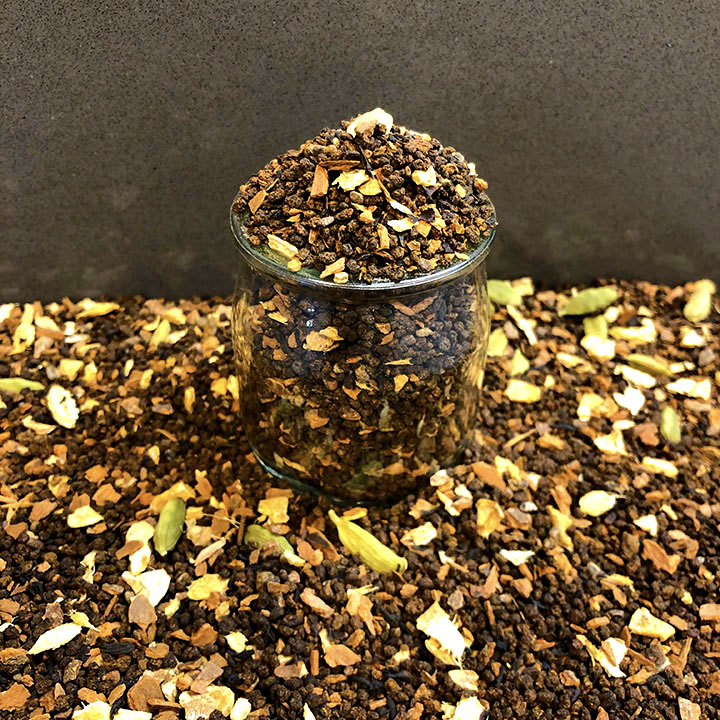Black Tea
Black tea, or “Red tea”, is derived from the Camellia sinesis plant. It has been used in China since the mid 17th century and today is the most consumed tea in both Europe and North America. Unlike Green and White tea, Black tea undergoes a near complete process of fermentation and oxidation, which gives it unique health benefits. Learn more about the world’s most famous tea.
Nectar Leaf Tea Preparation
Learning How To Prepare
Black Tea
Step 1: As a rule for teas, generally you want to use 2 to 3 grams of tea leaves per 8 ounces of water. Ensure that you use pure, fresh water preferably filtered (Avoid distilled water). Bring water to rolling boil.
Step 2: In General, black teas are brewed in hotter temperatures and for longer than green teas. The temperature you are looking for is somewhere between 190 and 212 degrees. Brew for 3 to 5 minutes to taste.
Step 3: You should cover your tea while it steeps to ensure a consistent heated environment during steeping process. Black teas are strong enough to handle additives such as milk, lemon, or sweeteners.
Tip: Whole tea leaves can often be steeped 2 to 3 times. Just make sure you increase the steep time with each infusion.

The History Of Black Tea
Black Tea is a beverage that dates back to the Chinese Ming Dynasty in the 17th century. It was also the first type of tea to ever be introduced to Europe. Prior to its introduction, only oolong and green tea was consumed regularly. It’s discovery was actually purely coincidental.
As the story goes, during a time of war, an army from Jinaxi invaded the Fujian province. The army decided to set up camp right by a large tea factory. This, in turn, completely halted all tea production. As the tea leaves sat out in the sun for a prolonged period of time, the leaves began to undergo a period of oxidation. Their color slowly began to turn from green to that of a dark red. In order to “save” the tea, a farmer decided to take the leaves and place them over a fire of pinewood. The smoky new beverage that came from the farmer’s effort turned out to be the first ever batch of Black Tea.
What Sets Black Tea Apart
Black tea is known for having a stronger taste than its counterparts. In a general sense, Black Tea has a robust and brisk taste to it. It is popular for its long shelf life and ability to be enjoyed either hot or cold. Health wise, it is full of antioxidants. Polyphenols are the main source of antioxidants found in Black Tea and are very important in promoting overall health.
In a general sense, Black teas are unique because they undergo a full oxidation and fermentation process. This is slightly different than a Pu-erh tea, which is actually post-fermented. That is, it was fermented, stopped, and then fermented again.
Our Black Tea Varieties
Vanilla Flavored Black Tea
This fully oxidized black tea has been used for over thousands of years to promote overall well-being.
Classic Earl Grey
As one of the most popular flavored teas in the world, our classic Earl Grey has a black tea base flavored with oil from the rind of bergamot orange.
Pu'er Black Tea
Our Pu’er, or Black Tea, is like a fine wine, it gets better with age! Enjoy this strong and full taste complemented by swirling hints of cocoa and vanilla.
Masala Chai Black Tea
This bold black tea is mixed with pieces of cinnamon, ginger, cardamom, and vanilla aroma.
Popular Types of Black Tea
English Breakfast: English breakfast tea is a classic staple known for its rich history as the drink of choice for elite royalty in the United Kingdom. Like most black teas, English Breakfast tea is enjoyed for its bold flavor notes, which is not overpowered by the addition of milk or sugar.
Bergamot (Earl Grey): Bergamot tea is commonly composed of black tea leaves and the fruit of the Citrus bergamia tree. To produce this tea, the leaves are either sprayed with bergamot extract or essential oil, or mixed with dried bergamot rinds, giving the tea a mild citrus-like taste. This tea received its name from the British prime minister Earl Grey but is native to Southeast Asia.
Pu-erh: Pu-erh tea is made from the leaves and stems of the Camellia sinensis var. assamica. For a tea to be classified as pu-erh, it must not only be made from this plant but also grown in Yunnan Province in China’s southwest. It’s one of the few teas to be designated a protected origin product by the Chinese government.
Assam Black: Assam tea is made from Camellia sinensis var assamica, a plant native to Assam region in India. Assam black tea is generally considered to have some of the highest caffeine content of all the black teas. It has also been shown to promote weight loss and strengthen the immune system.
Tea Caffeine Content
| 8 oz Beverage | Caffeine Content |
|---|---|
| Herbal & Rooibos Teas | 0mg Caffeine Content |
| Decaf | 5-10mg Caffeine Content |
| White Teas | 10-15mg Caffeine Content |
| Green Teas | 15-30mg Caffeine Content |
| Oolong Teas | 30-45mg Caffeine Content |
| Black Teas | 40-80mg Caffeine Content |
| - English Breakfast Tea (Black) | 40-45mg Caffeine Content |
| - Bergamot - Earl Grey (Black) | 55-80mg Caffeine Content |
| - Pu-erh (Black) | 40-45mg Caffeine Content |
| - Assam (Black) | 40-45mg Caffeine Content |
| Matcha Tea | 50-80mg Caffeine Content |
| Yerba Mate | 40-85mg Caffeine Content |
| Coffee | 85-200mg Caffeine Content |
Tip: There is significantly less caffeine in the average cup of tea when compared to coffee. The amount of caffeine you will find in tea depends on a number of factors, including the technique and how long you choose to steep it. The greatest impact on caffeine content is the temperature of the water and length of steeping time. Black, Oolong, Green and White tea leaves themselves have very similar caffeine content.
Discover More Nectar Leaf Teas
See all of our Nectar Leaf loose leaf tea varieties as well as our exclusive pairings with kratom strains.



